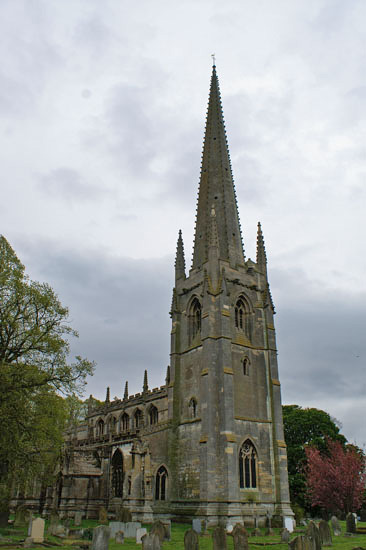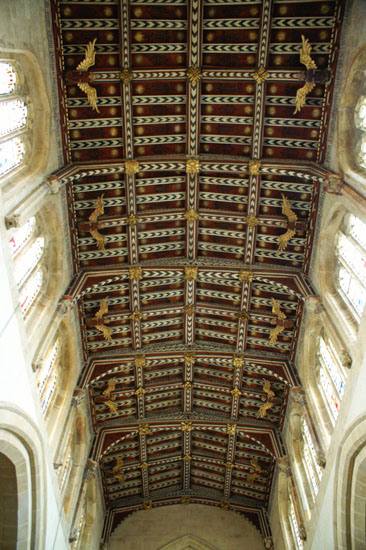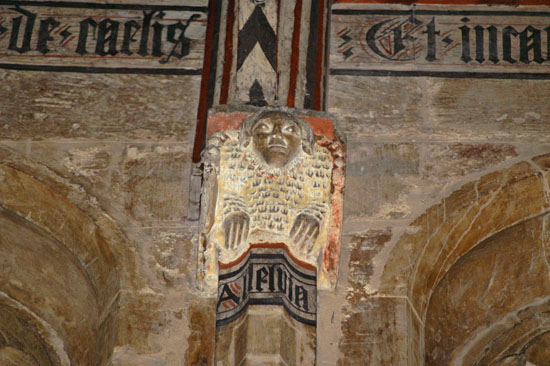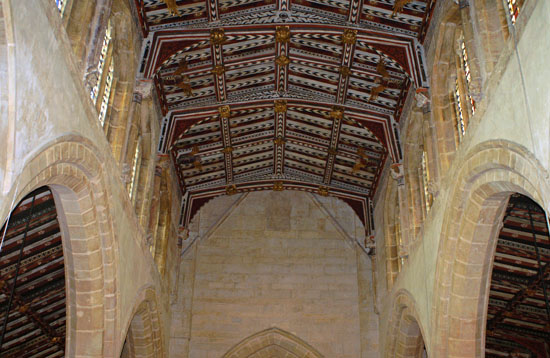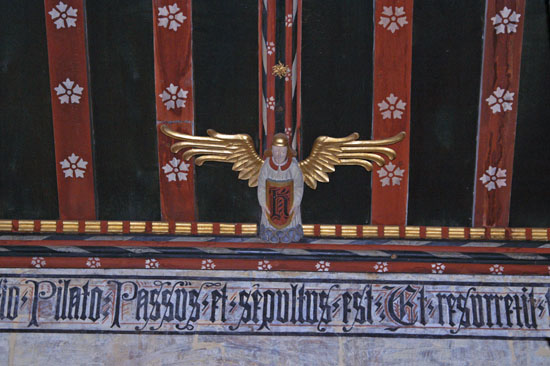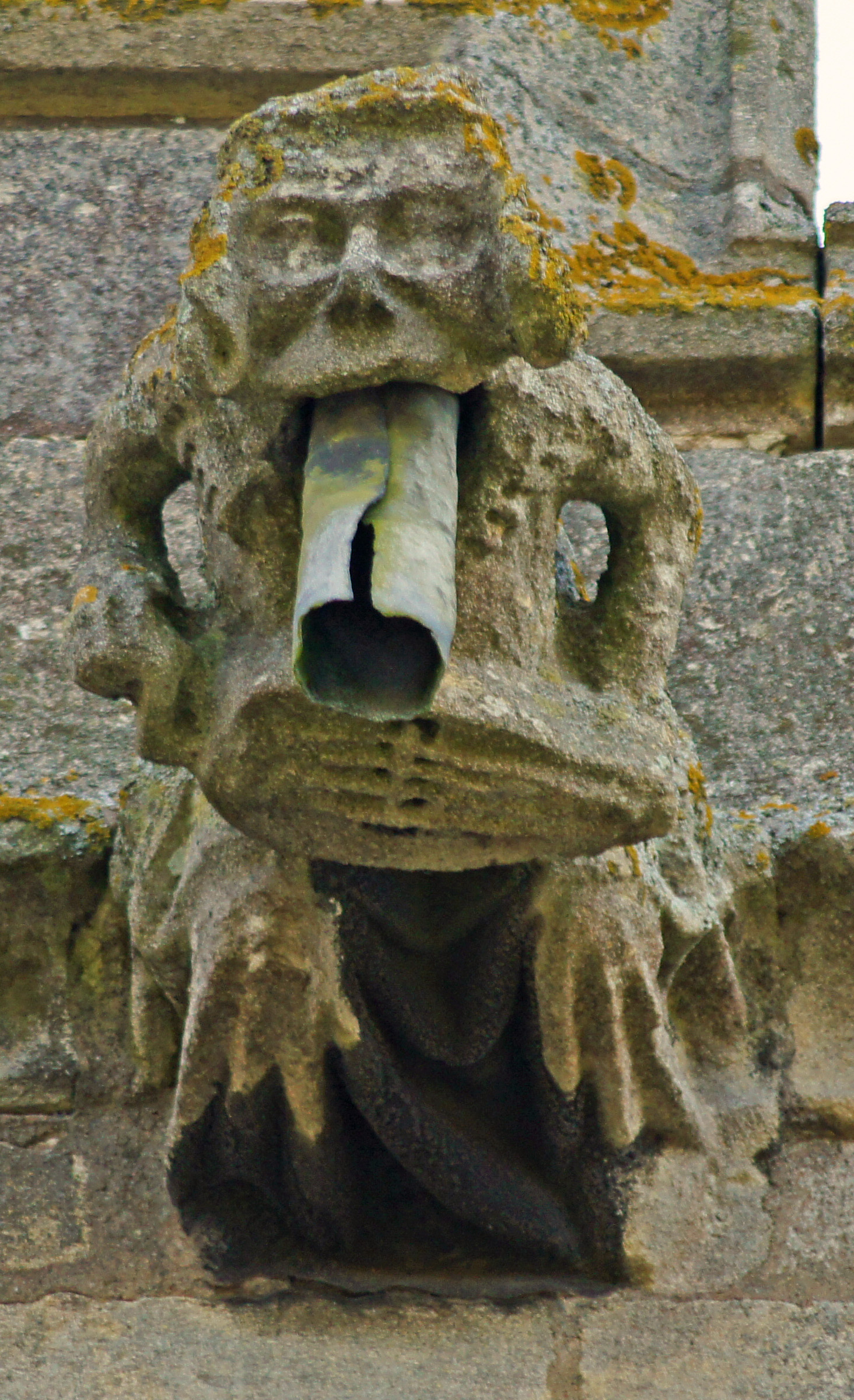|
Alphabetical List |
|
|
|
|
|
|
|
County List and Topics |
|
|
|
Please sign my Guestbook and leave feedback |
|
Dedication : St Helen Simon Jenkins: **** Principal Features : The epitome of Gothic. Wonderful carvings. |
||
|
|
|
external carvings? Or perhaps they are both connected to the Demon Carver? Whatever, the East Midlands area seems to be the home of the church frieze, with only Northern Oxfordshire - with a much smaller number of churches - rivalling it for quality. |
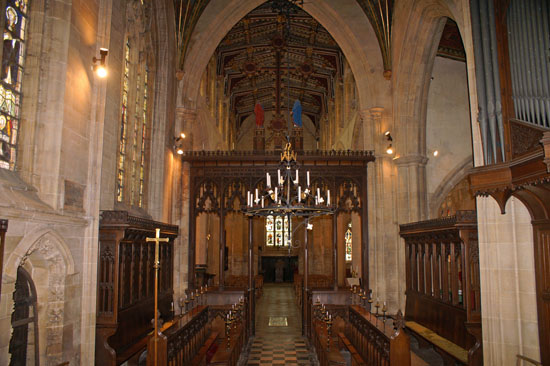 |
|||
 |
|||
|
Left: Looking towards the east end. The rood screen is 1890. the font was re-cut during the restoration. Right: Looking towards the west from the Victorian chancel. Woudl anyone know it was Victorian if they weren’t told? |
|
|
||||||||||||||||||||||||||||||||||||||||||||||||||||||||||||||||||||||||
|
Above: The east window of the south aisle - one of the oldest parts of the church. Right Lower and Centre: The beautiful aisle ceiling. |
 |
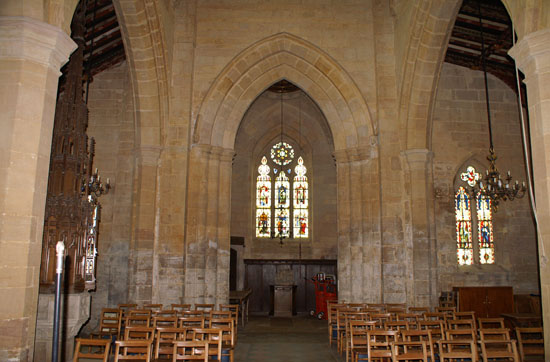 |
||||||
|
Left: The chancel ceiling. Right: The west end. Note the pretty Decorated aisle windows. |
|||||||
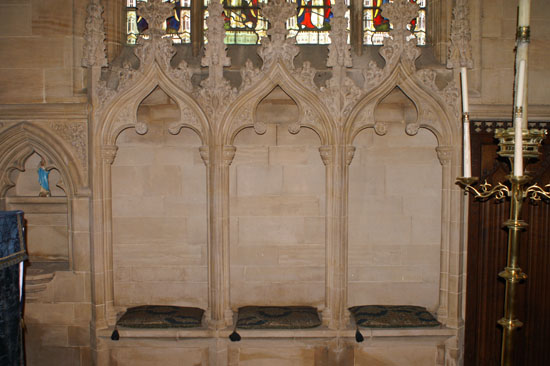 |
|||||||
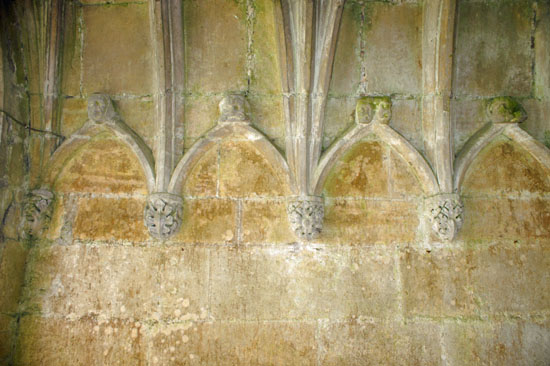 |
|||||||
|
Left: The triple sedilia and a small piscina in the chancel. Again, who would know this is not perpendicular period? Right: Elaborate vaulting, arcading and carvings within one of the porches. |
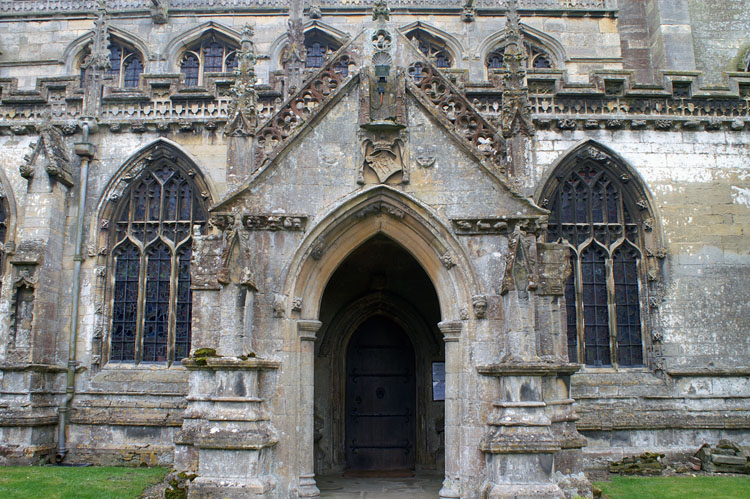 |
||||||
|
I have made this picture large to give some impression of the scale of the carved decoration on the outside of this church. The frieze extends beneath the aisle parapet, It continues around the porch (including on the sides not visible). The balustrade is ornate and surmounts clerestory as well as aisles. Above the porch door is a coat of arms. The soffits of the porch doorway and the aisle windows have carvings. Anything that can reasonably decorated has been decorated! |
||||||
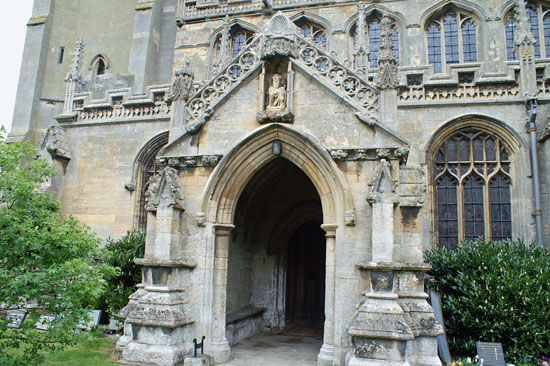 |
||||||
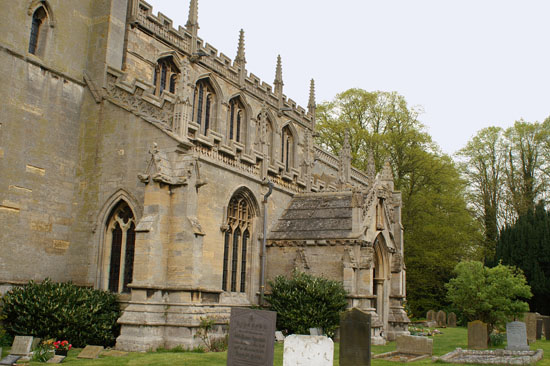 |
||||||
|
Left: The north porch. There are carvings on the porch itself and in fact the porch is almost identical to its south counterpart. The aisle windows look to be later, however, and there is no frieze below its roof. It’s not obvious why. The porches must be contemporary, so the aisles must have both existed at that time. The frieze on the south porch is echoed by that of the aisle so it seems that the aisles are likely to be similarly dated too. Right: A view of the north side. |
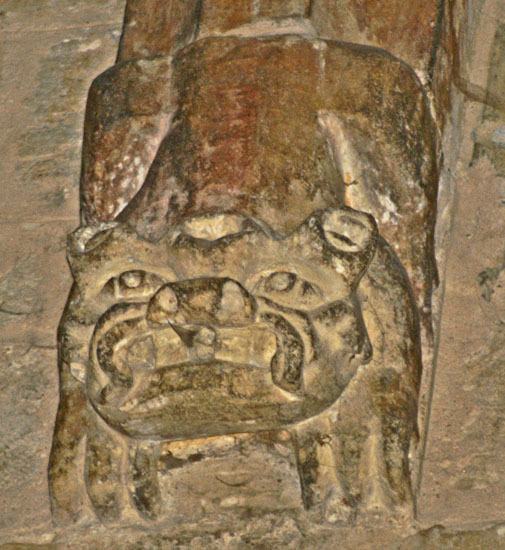 |
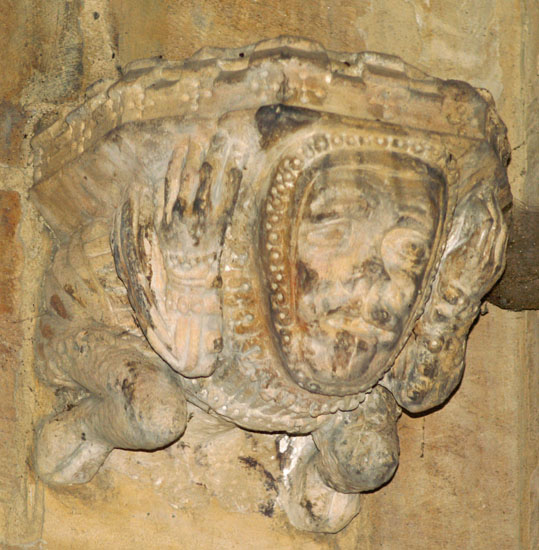 |
||||||
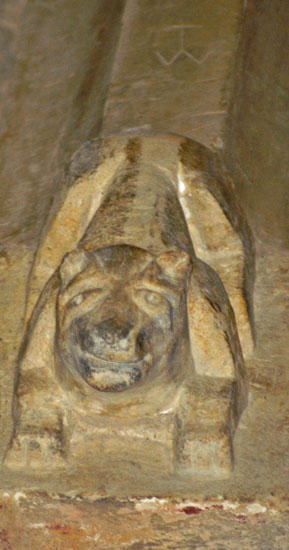 |
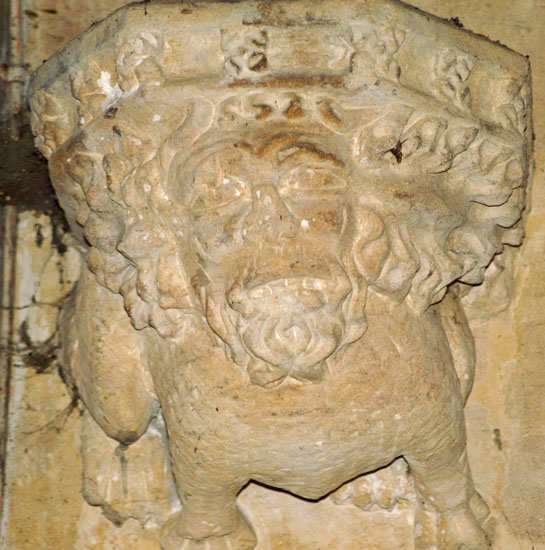 |
||||||
|
The interior of Brant Broughton has almost - but not quite - the same denisty of the carvings of the exterior! Here is a selection, including the two nice corbels on the right. On the second photograph from the left note the mason’ mark - a “TW” monogram - above the uncharacterisitcally crudely-carved dog. Mason’s marks were not, incidentally, a matter of vanity: it was the way the master mason kept a check on the quality of the work of his minions - and ensured that they got paid accordingly. |
 |
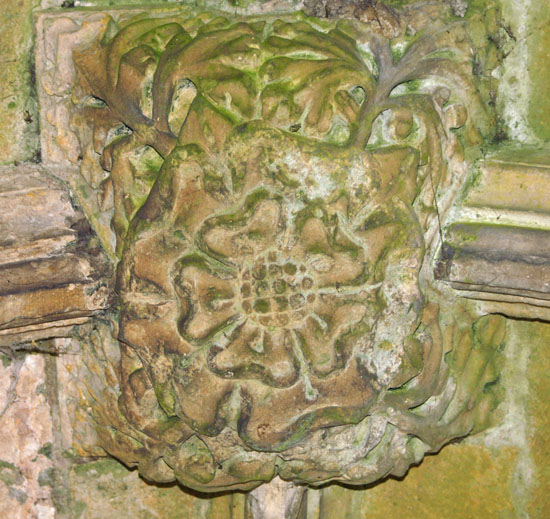 |
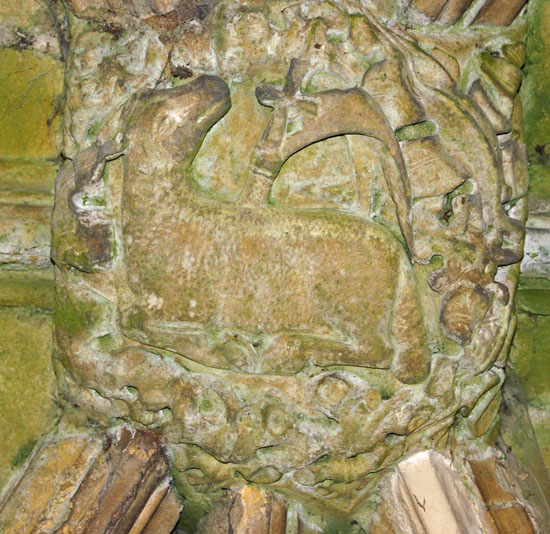 |
||||||||||
|
Three of the roof bosses in the porches. To the left is the Pelican in her Piety. Centre is a rose that symbolises the Virgin Mary. To the right is a particularly lovely “Agnus Dei” - the Lamb of God. |
||||||||||||
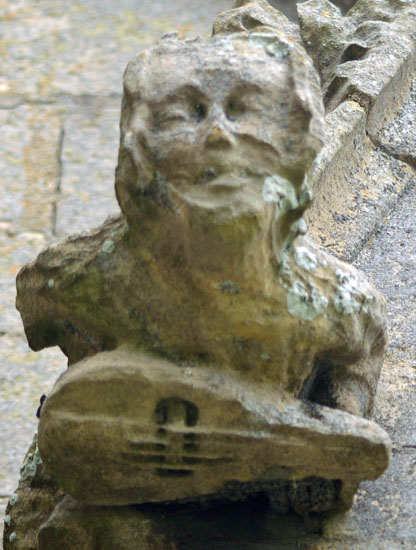 |
 |
 |
||||||||||
|
With the exterior carvings - apart from the frieze of which a huge amount more anon) - I can only show a selection. I always love to see village musicians and here are three, all adorning the many pinnacles on this church. It is a popular theme on mediaeval churches. The faces seem to have been carved in some detail - but then again these are large-ish figures. For the most wonderful portrayal of a village see the frieze at Adderbury in Oxfordshire. |
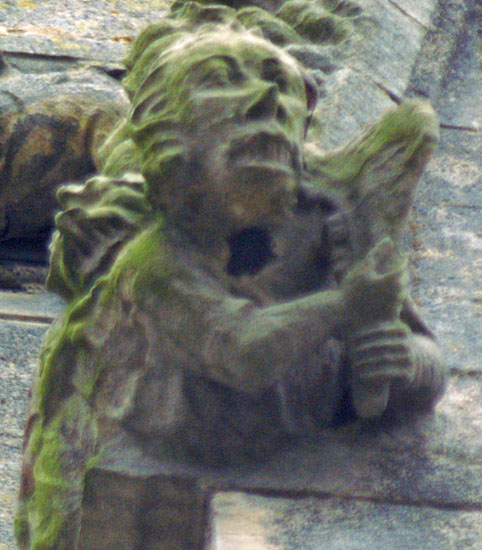 |
 |
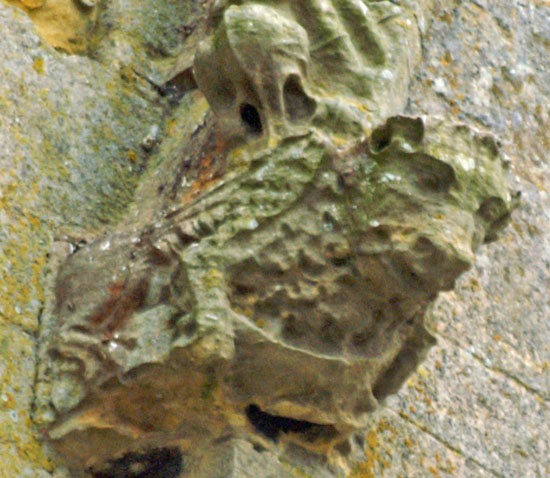 |
|||||||||||||||||||||||||||||
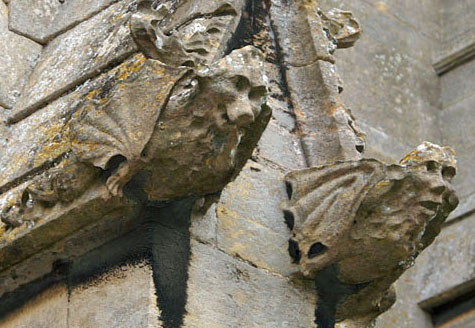 |
|||||||||||||||||||||||||||||||
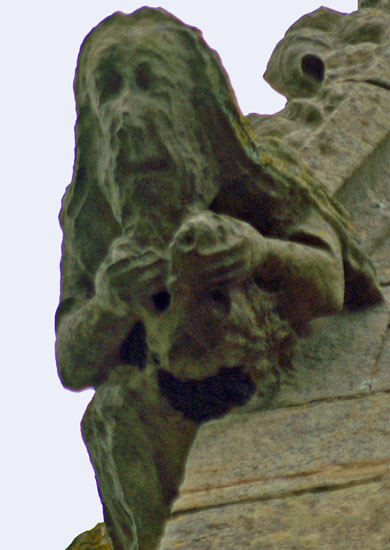 |
 |
||||||||||||||||||||||||||||||
|
Here’s a few more creatures to entertain you. I rather like the pair in the picture bottom right: men with dragons’ wings and bodies. |
|||||||||||||||||||||||||||||||
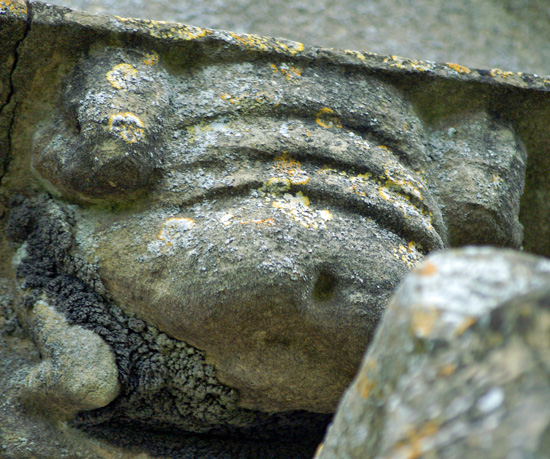 |
 |
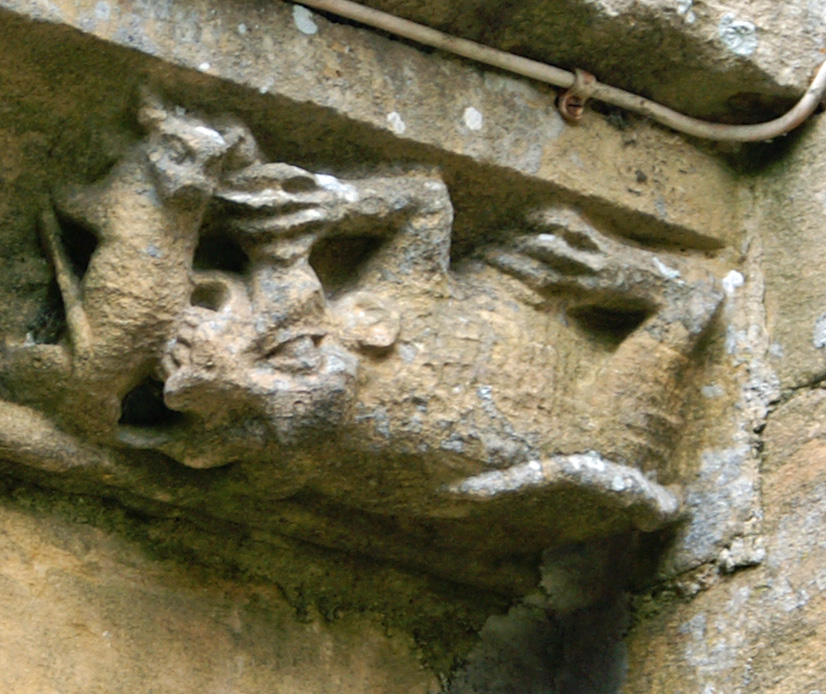 |
|||||||||||||||||||||||||||||
|
The Frieze |
|||||||||||||||||||||||||||||||
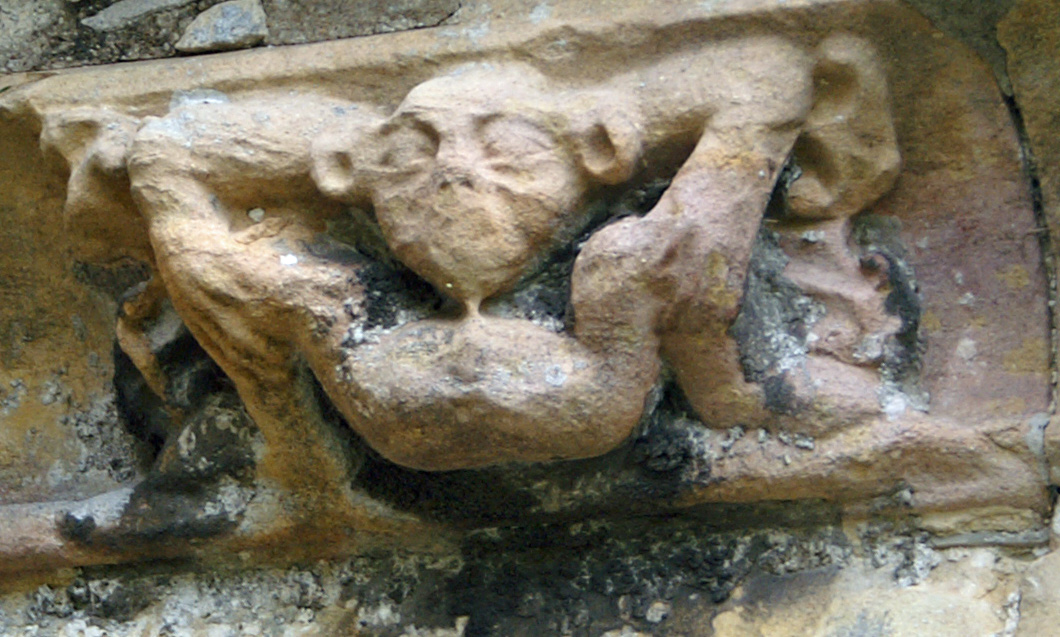 |
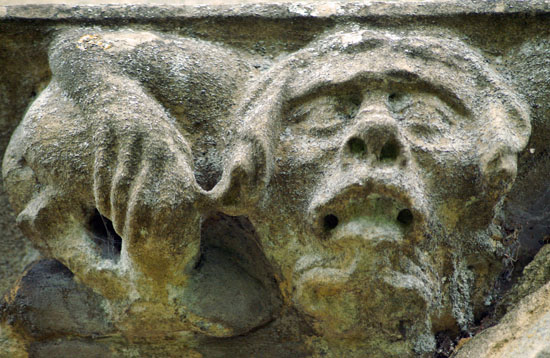 |
||||||||||||||||||||||||||||||
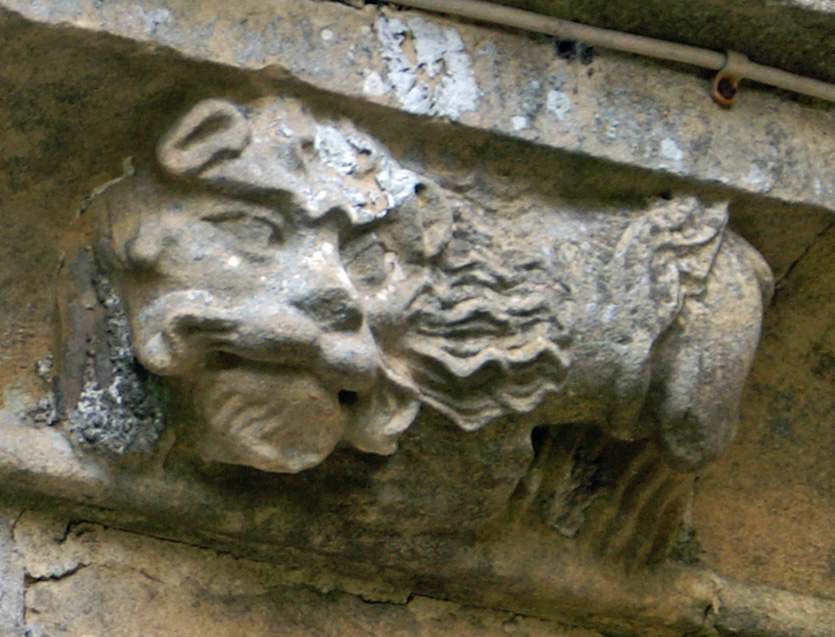 |
|||||||||||||||||||||||||||||||
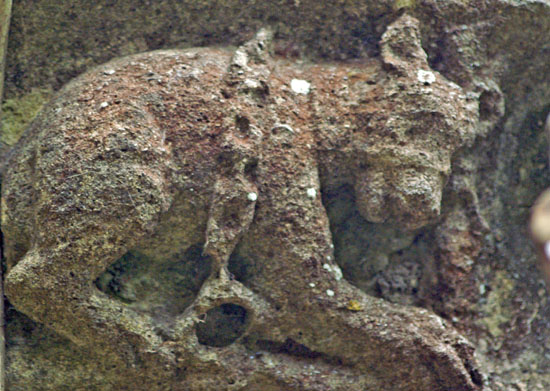 |
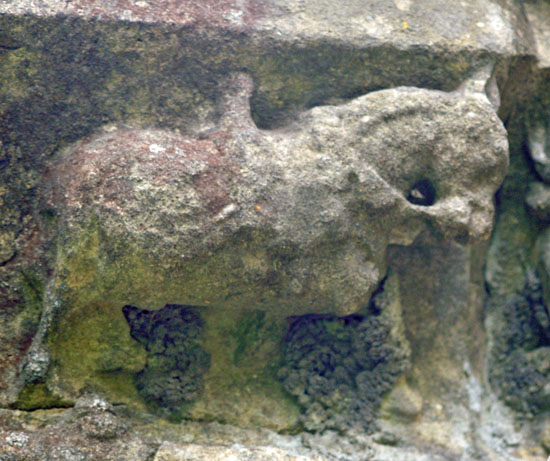 |
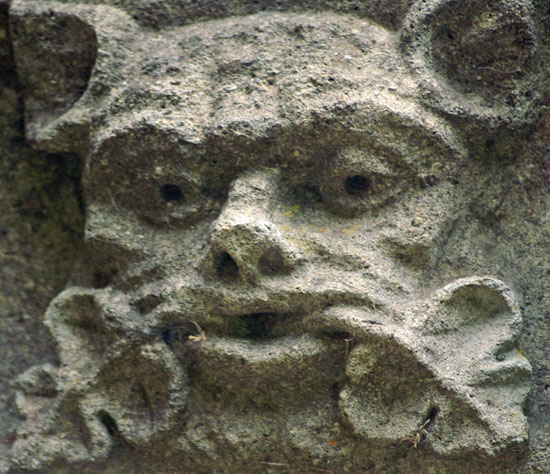 |
|||||||||||||||||||||||||||||
|
First off, at the top left we can see a “Mooning Man” carving. Like the friezes themselves, the mooning man is very much an East Midlands trademark . This one is a fat little chap that seems to be wearing a stripy pullover. Top centre is an odd creature that seems to have similarities with others at Oakham, Langham, Whissendine and Cottesmore in Rutland and at Buckminster and Hungarton in Leicestershire. I believe that they are representations of fleas which were a curse of mediaeval people but which were impossible to see properly in those microscope-less days. . As with all of the friezes there are some that are unique and many that are hard to interpret. One of the most interesting is top right where an upside down beast seems to be sinking his teeth into a smaller one. The second row shows the usual mix of beasties and exhibitionists. Bottom left is my favourite - a chained bear, sad as we might feel about his plight. Bottom Centre is a horse with harness. Bottom right is what looks like a Green Man with a a rather minimalistic pair of oaks leaves spewing from his mouth - except his ears are animalistic. |
|
The Oakham and Whissendine Connection |
|||
|
Friezes are a particular preoccupation of mine because I live next to one of the best - at Ryhall in Rutland. Establishing the certainty that at least one of the carvers at Ryhall also carved at Oakham led me to realise that Rutland and adjoining counties have a surprising number of churches with friezes and that there is at least a possibility that one or more of the carvers worked on several of them. I called this the Quest for the Demon Carver and you can see my work here. I wrote that piece two years ago and it badly needs re-writing because my understanding of what I now call the “East Midlands School of Frieze Carving” has developed considerably. I now believe that the carvings on these friezes were the work of a guild of stonemasons probably based in Oakham. Some, but not all, of the masons within the Guild used a “mooning man” carving to announce their presence. The existence of a “mooner” at Brant Broughton - albeit one different in style from the others - has always bothered me. It is inconceivable that the Oakham guild operated so far from its home town: it is fifty miles from there to Brant Broughton. Yet Mooners are extremely unusual on church friezes (although less so on gargoyles). Is the one here a coincidence? I now know that it is not. Oakham is bedecked with friezes under almost every parapet. It is, however, a somewhat repetitious one. With the exception of some on the south west aisle carved by the “Demon Carver” (see also Ryhall Church) and some on the South Porch the frieze is mainly a series of fleurons and grotesque heads. As many as half of those dozens of heads are of a distinctive pattern: they have what I characterise as cow-like faces and ears. You can form your own view of what they look like and I won’t argue with you but they are undoubtedly distinctive. Here are some examples. |
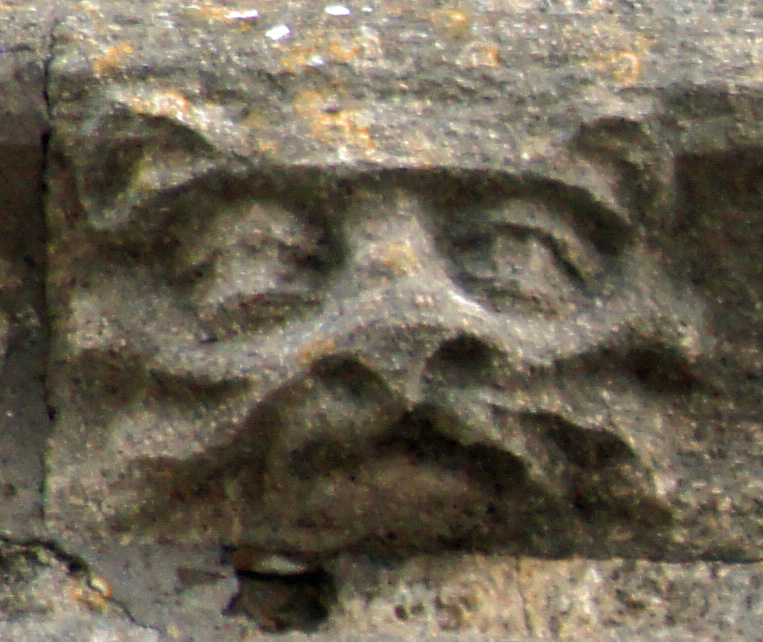 |
 |
||||||||||||||
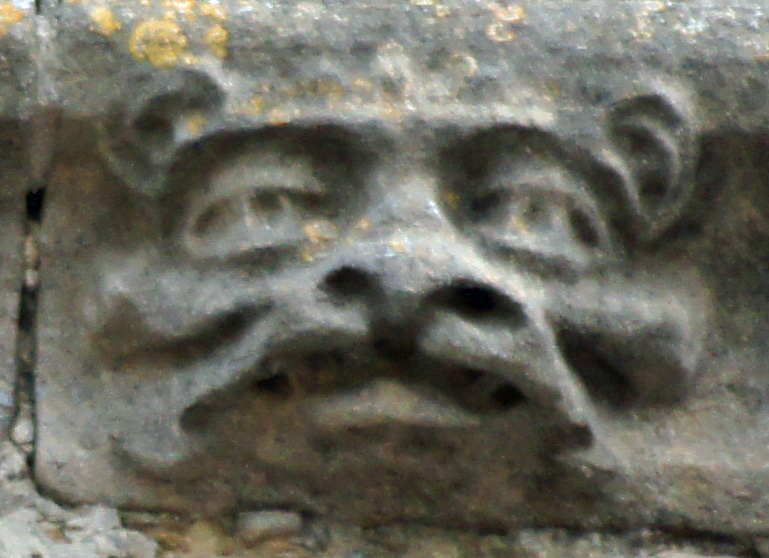 |
|||||||||||||||
|
...and below is a couple of carvings from Brant Broughton |
|||||||||||||||
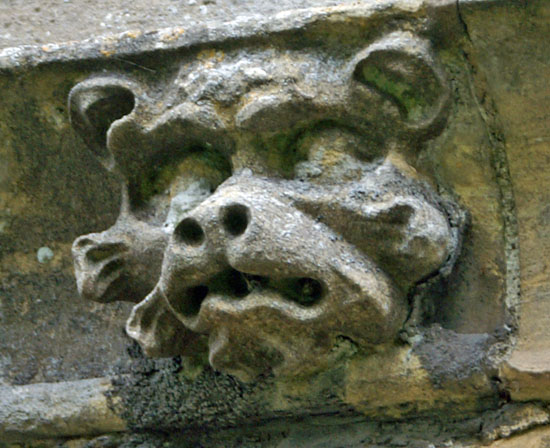 |
 |
||||||||||||||
|
The same bloke carved these at Oakham and Brant Broughton, didn’t he? Here’s another couple from Whissendine in Rutland less than six miles from Oakham. |
|||||||||||||||
 |
|||||||||||||||
|
The carver - I call him “John Oakham” by the way - has opted for happier faces here. Still not convinced by all this? Well, have a look at these two then.... |
|
|
||||||||||||||||||||||||||||||||
|
So, I’m as sure as I can be that one of the members of the Oakham “Mooning Men“ Guild made his way to Brant Broughton looking for work. I don’t believe that he carved the whole frieze there but he did quite a lot of it. He left a mooning man there too. I should add that the “flea” figure (see above) also has counterparts at Oakham and Whissendine and also I have identified five individual members of the “Mooning Men Guild” within the Rutland and East Leicestershire area. Of the five, this one - the “Cowboy Carver” - can only be definitely identified at Oakham and Whissendine. We can only speculate that he heard of the large building program that was going on at Brant Broughton and decided to try his luck there. |
